The KL Metro
With more than 100 stations, Kuala Lumpur has the second most extensive metro system in Southeast Asia (after nearby Singapore). The main airport (KUL or KLIA) has two dedicated lines that connect to KL Sentral, which is the largest train station in Southeast Asia. The KTM Komuter and airport lines run on strict timetables, while the LRT, MRT, and Monorail lines run every five to ten minutes, depending on the time of day. Service generally starts at 6 AM and ends before midnight.
While the system has come a long way since its inception in 1996, you still have to do a bit of research to decide which pass is right for you. You’ll also need different tokens (or passes) for the commuter and airport lines. Here is a breakdown of the different Rapid KL packages available.
The good news is that the system is very affordable, and you no longer need a car to explore KL. Here are ten major attractions, which you can easily access via the metro.
A similar version of this piece first appeared on Matador Network.
Batu Caves
BAZAAR BARU CHOW KIT
PETRONAS TOWERS
CHINATOWN
CENTRAL MARKET KUALA LUMPUR
NATIONAL MUSEUM OF MALAYSIA
BRICKFIELDS (LITTLE INDIA)
KL FOREST ECO PARK
DATARAN MERDEKA
National Museum of Malaysia
If you don’t know much about Malaysian culture and history, this is an ideal place to start. With four exhibits spread out between two floors, the National Museum (or Muzium Negara) traces local history back to prehistoric times and up to the present. Objects of interest include a replica of a 500,000 Java Man skull as well as a Bronze Age drum from Batu Buruk. There’s also a small keris collection and some coins dating back to the 15th-century. The upstairs galleries focus on modern history, including the lesser-known history of the Malayan Communist Party. There are also some paper notes and other items on display from the Japanese occupation period.
There are free guided tours in six different languages, but if you speak English or Malay, you don’t need to plan your visit around a guided tour. There’s an underground walkway to the museum from KL Sentral. If you’re using the MRT green line, the museum has its own stop.
Nearest station: Muzium Negara
Central Market Kuala Lumpur
With more than 350 mostly small cafes and shops spread out between two floors, Pasar Seni (or Central Market) is KL’s oldest. It’s cleaned up nicely since its days as a wet market. Today, you’ll see a lot of tourists here, as it’s an ideal place to visit during your first day in KL. On the ground floor, there are separate sections representing Malaysia’s three main ethnic groups: Malay Street, Little India, and Straits China. In these sections, you’ll find mostly arts and crafts like batik as well as kaftan and other Indian dresses.
If you want to eat inside the market, go to the second floor, where there’s a food court as well as some full-service restaurants. East of the building, there’s a bustling outdoor market, where you can find an impressive variety of food stalls with quirky names like Mr. Lassi, Pasta Box, and Satay City.
Nearest station: Pasar Seni
Dataran Merdeka
Also known as Independence Square, this is where the first flag of Malaya was raised to symbolize independence from Great Britain. British administrators used to play cricket where the 100-meter high Malaysian flag now flies. For a better understanding of how Kuala Lumpur (which means “muddy estuary”) grew from a tin-mining village to one of Southeast Asia’s megacities, check out the Kuala Lumpur City Gallery on the south end of the square. Here, you’ll find replicas of KL’s iconic buildings. It’s 10 MYR to enter, but they give you a voucher for half that, which you can spend in the quirky museum shop and cafe. Use it to try one of their artfully crafted durian cakes, which you’ll see on display behind the counter.
Like Chinatown, the area undergoes a transformation after dark. Masjid Jamek (one of the oldest Mosques in KL) lights up as does the area along the Gombak and Klang Rivers. Both locals and tourists unwind around the River of Life walking trail into the early hours of the morning. It’s easily one of the most romantic spots in KL. Guided tours are available, but there are enough information boards to make a guide unnecessary except for the more hardcore history buffs.
Nearest station: Masjid Jamek
Petronas Towers
They may not be the world’s tallest buildings anymore, but they are still the highest twin towers by nearly 100 meters. The nearest metro station is named after the 1.5 million square foot shopping center at the feet of the towers. In addition to 300 stores, KLCC also hosts an art gallery, science center, underwater aquarium, and the Petronas Philharmonic Hall. For 80 MYR, you can visit the observation decks. One is on the 86th floor, and the other is the world’s highest two-story sky bridge, which connects the two towers. While the observation decks of KL’s most recognizable landmark can be a bucket list item for many, you can also watch the sunset over the towers from one of the nearby rooftop lounges. The Traders Hotel is located on the other side of KLCC Park. From their 33rd-floor Sky Bar, you can sit poolside, while eating sate ayam with one of their signature drinks (or mocktails) as you watch the sunset over KLCC park and the towers. Be sure to book a spot in advance.
Nearest station: KLCC
Kampung Baru
There are still remnants of the old tin mining village if you know where to look. Kampung Baru (meaning new village) is the most well-maintained traditional Malay village in what is now a city of nearly 2 million. Here, you’ll find the streets lined with wooden homes built on stilts, small cafes, and street food vendors under the shade of coconut and banana trees. To fully experience the village, you should visit once during the day and again on a Saturday night. The Kampung Baru night market dates back to 1899 and is open Saturday nights into Sunday early morning. No matter when you visit, new village is an ideal street food spot from morning until night. Nasi Lemak Wanjo is a popular spot for both tourists and locals. Here, you pay 4 MYR (or 1 USD) for the coconut rice base, which many considered to be Malaysia’s national dish. From there, you choose your toppings, which include rendang curry and fried chicken as well as fried lungs for the more adventurous.
If you want a guided cycling tour of Kampung Baru and neighboring Chow Kit, check out MikeBikes. The modern-looking and ultra-clean underground metro station of the same name is in sharp contrast to the gritty looking, but friendly enclave.
Nearest station: Kampung Baru
Chinatown
Shaped like an imperfect diamond, KL’s Chinatown sprawls out from the eastern shore of the Klang River and changes character throughout the day. This is the kind of area you can visit for breakfast, lunch, and dinner and get a different vibe each time. The area is also home to the oldest Hindu and Taoist temples in KL. There’s the famous Petaling Street Market, where buyers haggle with vendors over everything from handbags and clothing to arts and crafts, as well as electronics of questionable authenticity. But the real attractions here are the local food and drink vendors, many of whom specialize in a handful of items handed down from their parents.
Although the area is easily walkable, you should have a game plan before exploring. Talk to a local before visiting, lest you end up missing the hole-in-the-wall type places that you are likely to plan a future trip around. In KL’s Chinatown, the best places are not the most aesthetically pleasing from the outside. And the more reputable vendors often close when they sell out as opposed to at a set time.
There are different kopitiams (traditional coffee shops) that you can check out in the area. Ho Kow is one of the most popular ones. You can also get traditional Hainanese breakfast there. You can find some of the best dishes in Chinatown under 10 MYR in one of the many inconspicuous looking food courts like Lai Foong (for beef noodle or clam soup) and Tang City (for wonton or dry noodles in black sauce). If you’re looking for something a bit more post-2000-Brooklyneque check out Da Bao or one of the other cafes on the stretch of Petaling Street between Sultan and Balai Polis.
Check out this piece by Priya Ghatol about Singpore’s Chinatown.
Nearest station: Pasar Seni
KL Forest Eco Park
Known locally as Taman Eko Rimba, KL Forest Eco Park is a rainforest situated in the heart of an urban jungle. There are ten different trails, most of which are lined with strategically placed seating areas. The trails vary in terms of terrain and width. Some are more like paved sidewalks, while others look to be barely maintained. The park is large enough fto experience some solitude with nature but small enough that you may run into some of the same people if you do more than a few of the trails. Wear comfortable shoes and try to get there early. The heat gets more intense as the day goes on. You’ll need water, which you can buy at the main entrance. Try to plan your trip to avoid the rain.
The entrance is off of Jalan P Ramlee, so you’ll have to head east on Sultan Ismael after you exit Bukit Nanas station. From there, turn right onto Ramlee, and the entrance will be on your right. You have to walk past KL Tower and the Upside Down House to get to the park’s main (and only) entrance. All are located on a hilltop. There’s a shuttle available on Jalan Puncak, at the bottom of the hill. It costs foreigners 40 MYR to enter. Cash only.
Nearest station: Bukit Nanas
Bazaar Baru Chow Kit
Bazaar Baru Chow Kit is the polar opposite of the climate-controlled, well-organized Central Market. Known for its narrow lanes and pungent scents, this is KL beyond the megamalls, skyscrapers, and endless Starbucks locations. The market is divided into two sections, so if you have a weak stomach, skip the fish and meat (wet) section and head to the (dry) fruit and vegetable market. As you stroll the narrow lanes, voices will become indistinguishable as you bump elbows with (mostly) locals negotiating prices with their favorite vendors. To truly experience the market, you need to walk around the fish and meat sections and hear the seemingly endless sounds of butcher knives chopping up ayam and ikan. Unless you plan to avoid the meat and fish sections, don’t wear nice shoes. It’s closed on Sundays.
Nearest station: Chow Kit
Brickfields (Little India)
This shoe-shaped Indian enclave is home to Christian churches, Buddhist and Hindu temples, and dozens of shops and restaurants. Jalan Tun Sambanthan is lined with small, family-run textile shops, grocery stores, jewelry shops, video stores, and cafes. The road is separated from the sidewalk by colorful arches, which hover over concrete flower beds, with Little India Brickfields inscribed in them. Of all the streets in Little India, Sambanthan represents the greatest assault on the senses. The smell of fresh fruits and vegetables mixes with exhaust fumes to the soundtrack of honking horns and Indian music blaring out of the different shops.
If you’re looking to get off the main road, head to Moneys Corner, which is in a well-hidden alleyway between Sambanthan and Vivekananda. This is a no-frills Indian/Malay version of the food courts which are omnipresent in Chinatown. If you haven’t eaten from a banana leaf or tried Nasi Kandar, this is an ideal place to try both with the locals. If you’re exiting from the KL Sentral Monorail station, just walk south on Sambanthan.
Nearest station: Bangsar
Batu Caves
Named after a nearby village, this 400 million-year-old limestone hill is home to one of the most popular Hindu shrines outside of India. Get here early, especially if you want to climb the 272 rainbow-colored steps, which lead up to the main Hindu temple. Because of the crowds and intense heat, it’s best to visit before 10 AM or after 7 PM. While most visitors day trip here from KL, there are enough activities to make it worth spending at least one night. There are more than 160 rock-climbing routes in the area, and you can also catch daily Indian cultural shows. If you don’t mind crowds, try to plan your visit to coincide with the annual Thaipusam festival, when Hindus from around the world descend on the complex.
While there’s no cost to walk around and snap Instagram photos, there are fees involved if you want to fully experience Batu Caves. You have to pay 5 MYR to enter the art gallery or museum caves, the latter of which depicts the story of Rama through artfully detailed sculptures. These caves are worth the entrance fee, just for the fact that limestone absorbs heat, resulting in a more constant temperature. The streets to the east of the train station are lined with vendors selling local fruits like durian and jackfruit as well as local arts and crafts. You’ll see plenty of visitors drinking fresh coconut juice to stay hydrated. Just be careful of the monkeys, who tend to congregate around food stalls.
From KL Sentral, a one-way ticket on the commuter rail costs 2.60 MYR (less than one US dollar). The ride takes 40 minutes, and unlike the other metro lines, commuter trains run on strict schedules, which are on display at all stations. Trains to and from Batu Caves leave roughly every 30 minutes.
Nearest station: Batu Caves
Practical Tips for using the KL Metro
- Service starts around 6 AM and ends around midnight
- KL Komuter trains (including the airport lines) are not included with most day passes
- Some lines have women-only cars
- Service is more frequent during rush hour
- Make sure you know which exit to take as crossing many streets in KL can be a challenge
Want to keep the conversation going? Let’s connect via my social links below.
Like this post and want to share? Planning a trip to Kuala Lumpur? Pin it!
This post was sponsored by Tourism Malaysia. All pictures were shot with a Panasonic Lumix ZS100 4K Point and Shoot Camera with the exception of any Instagram pics.
Have you been to Kuala Lumpur? If so, what did you do? How did you enjoy it?


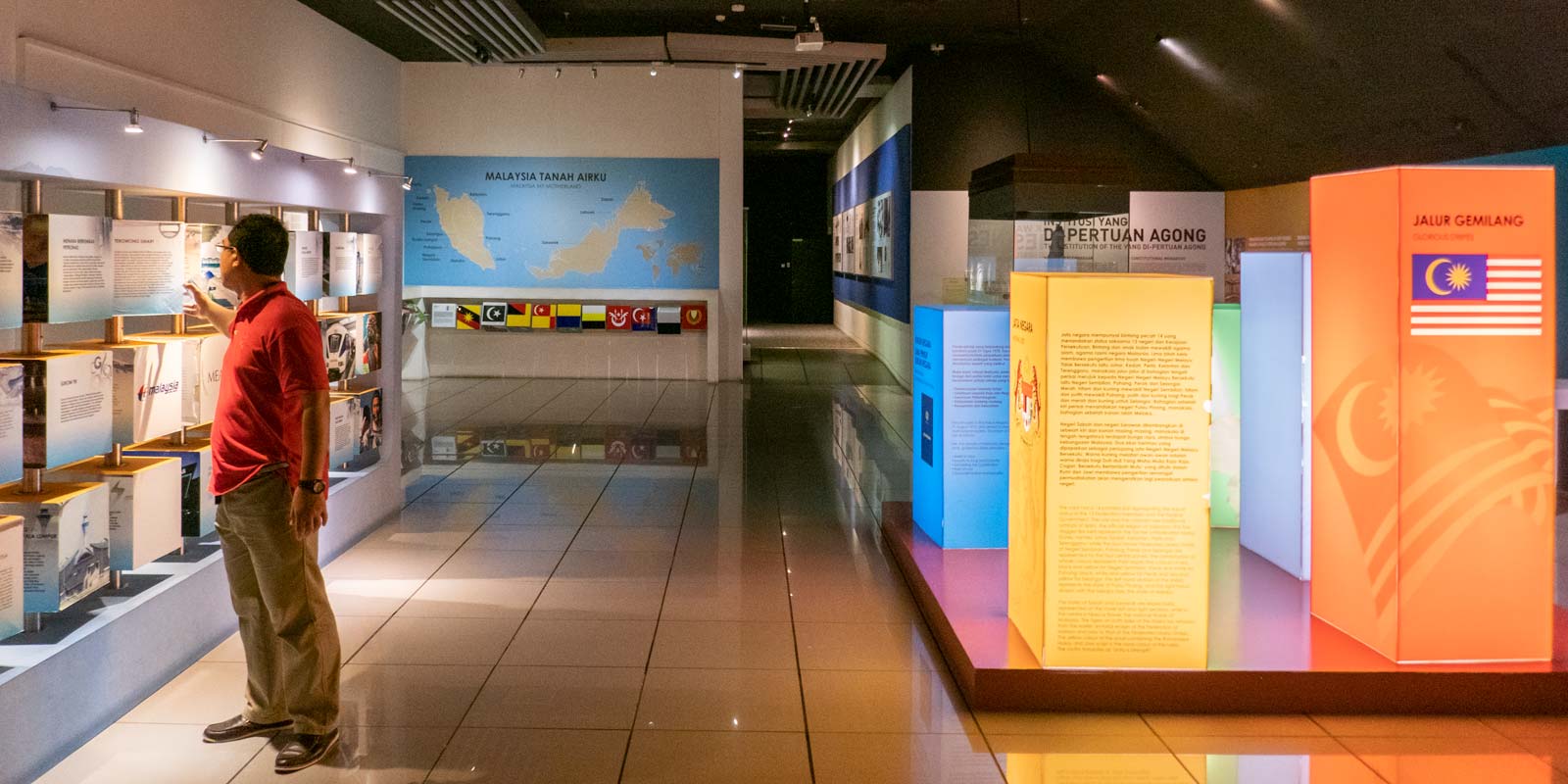

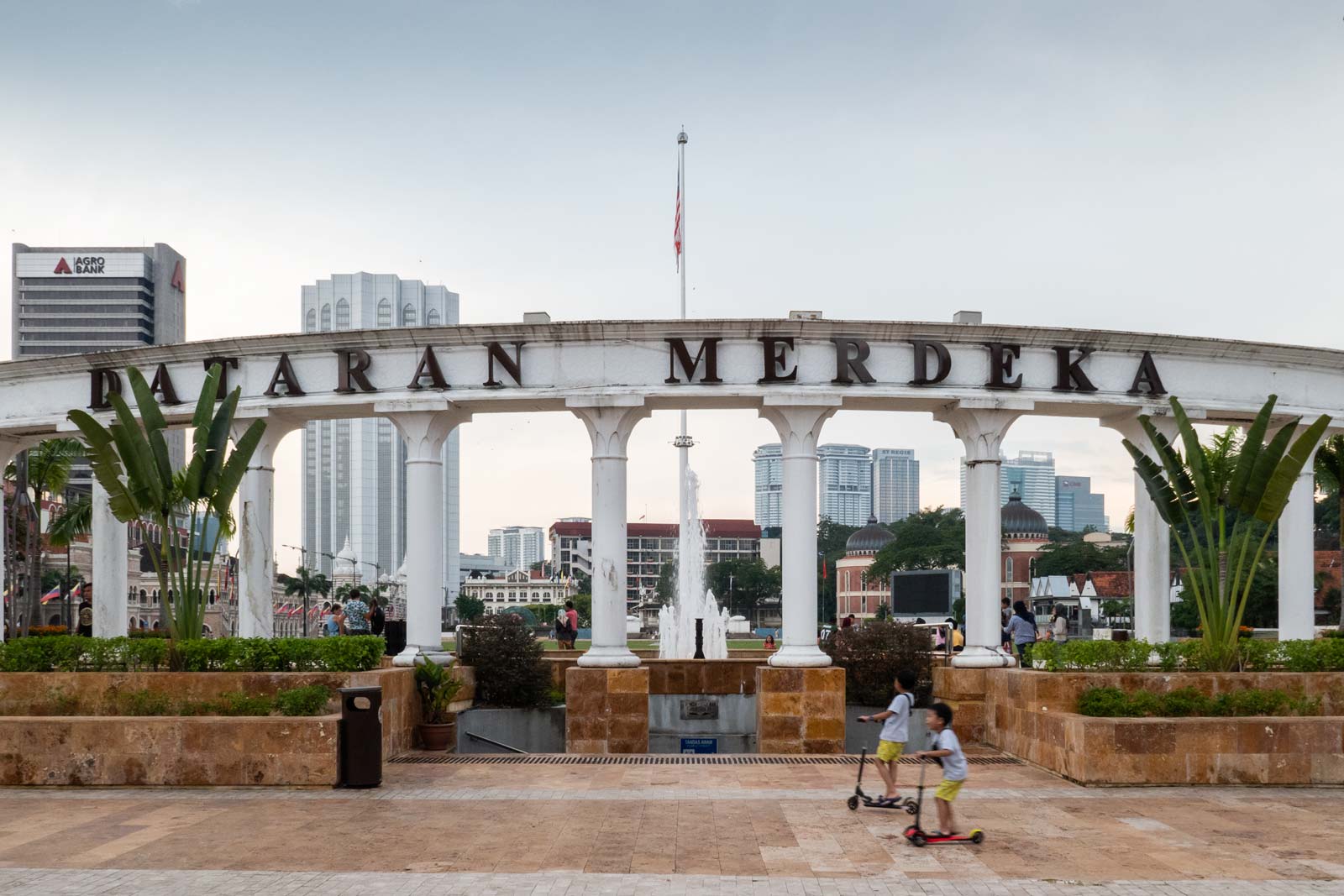

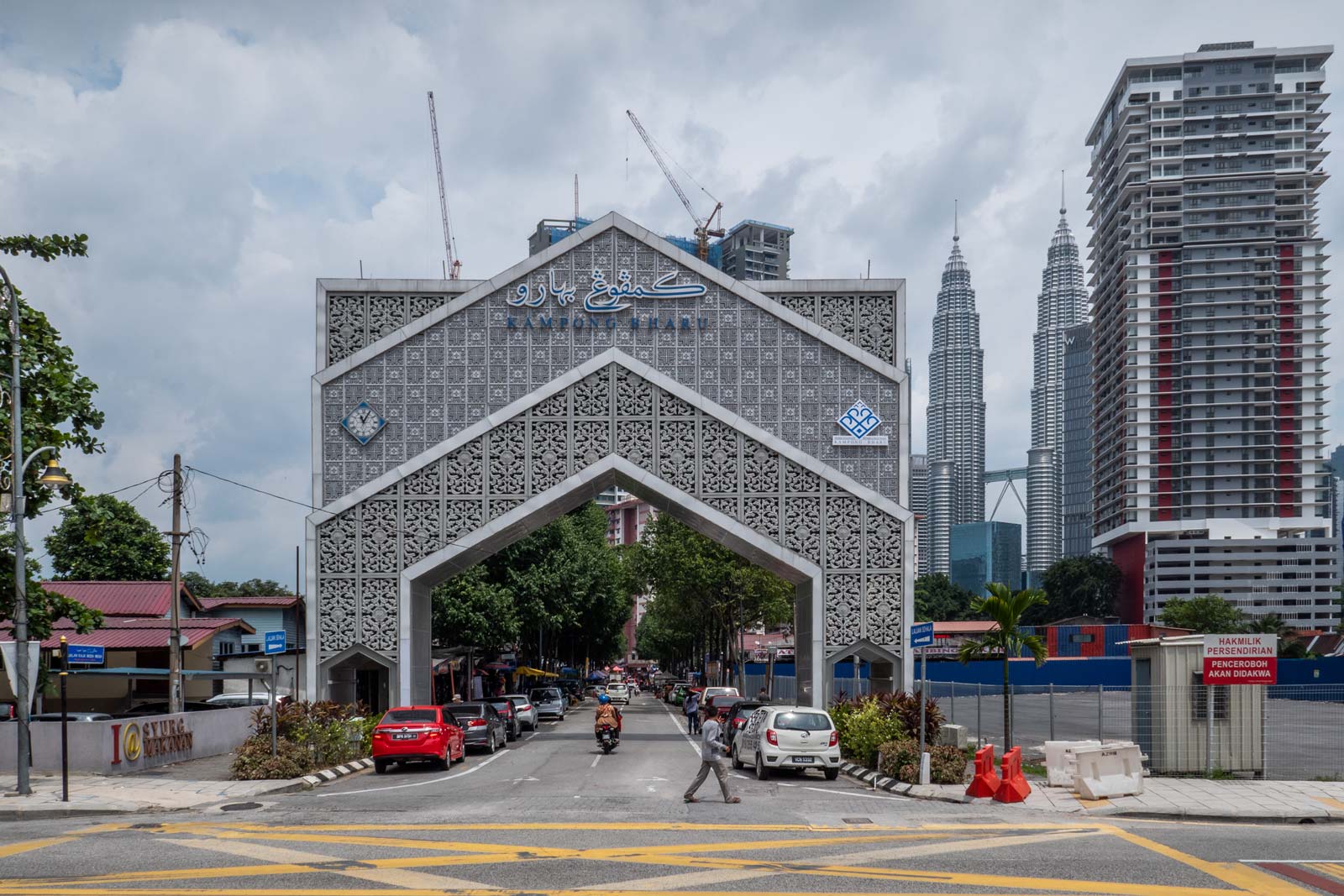
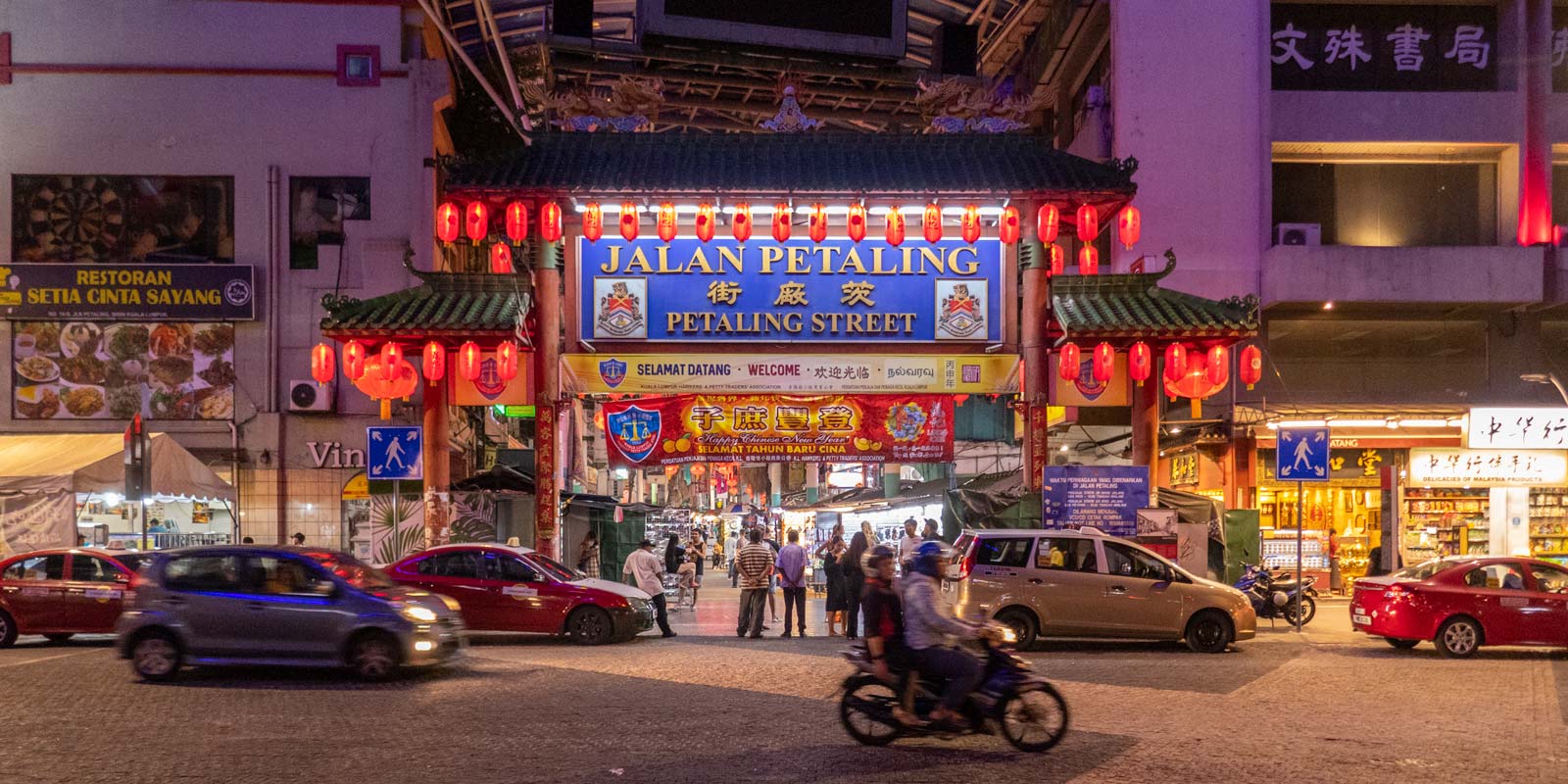
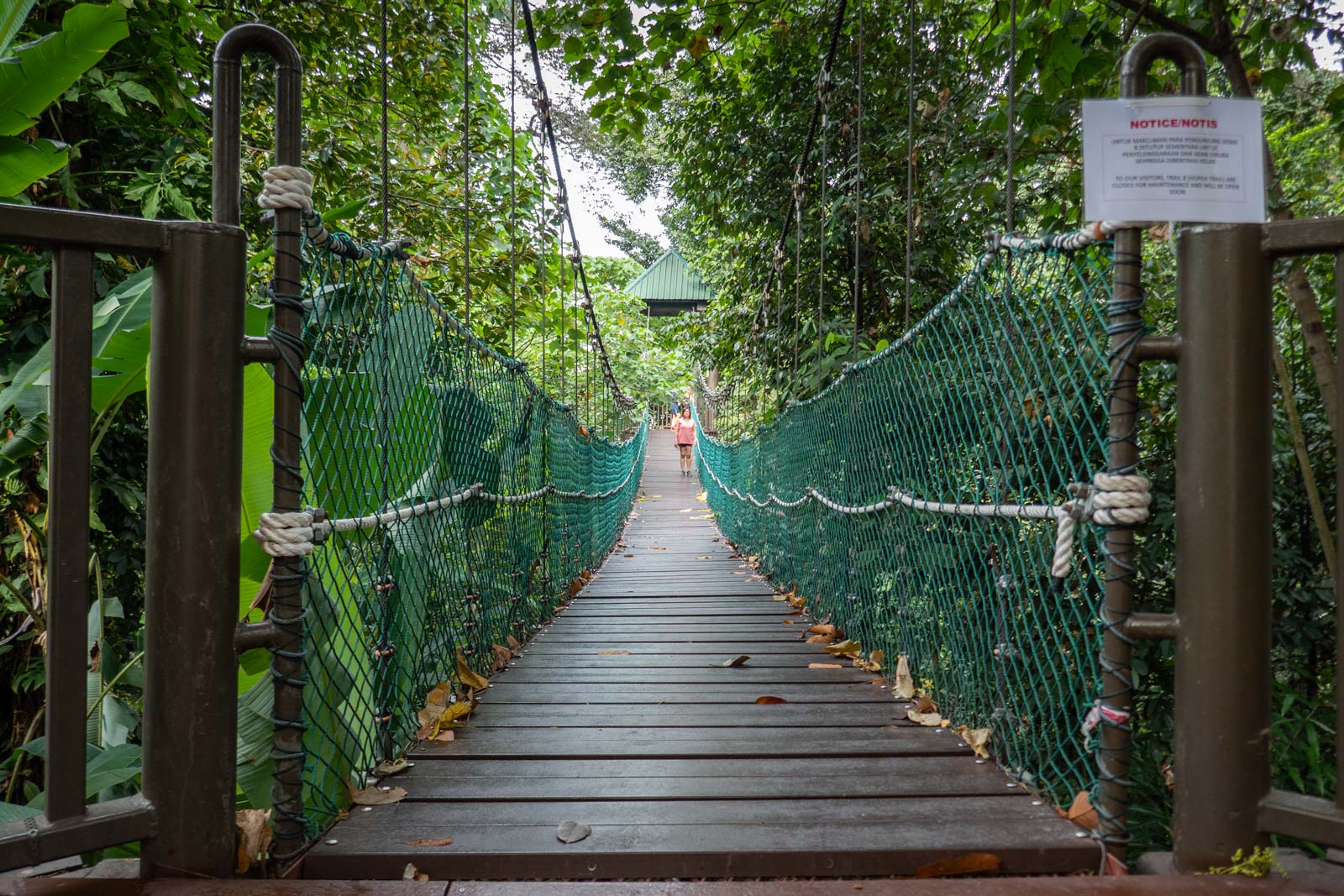
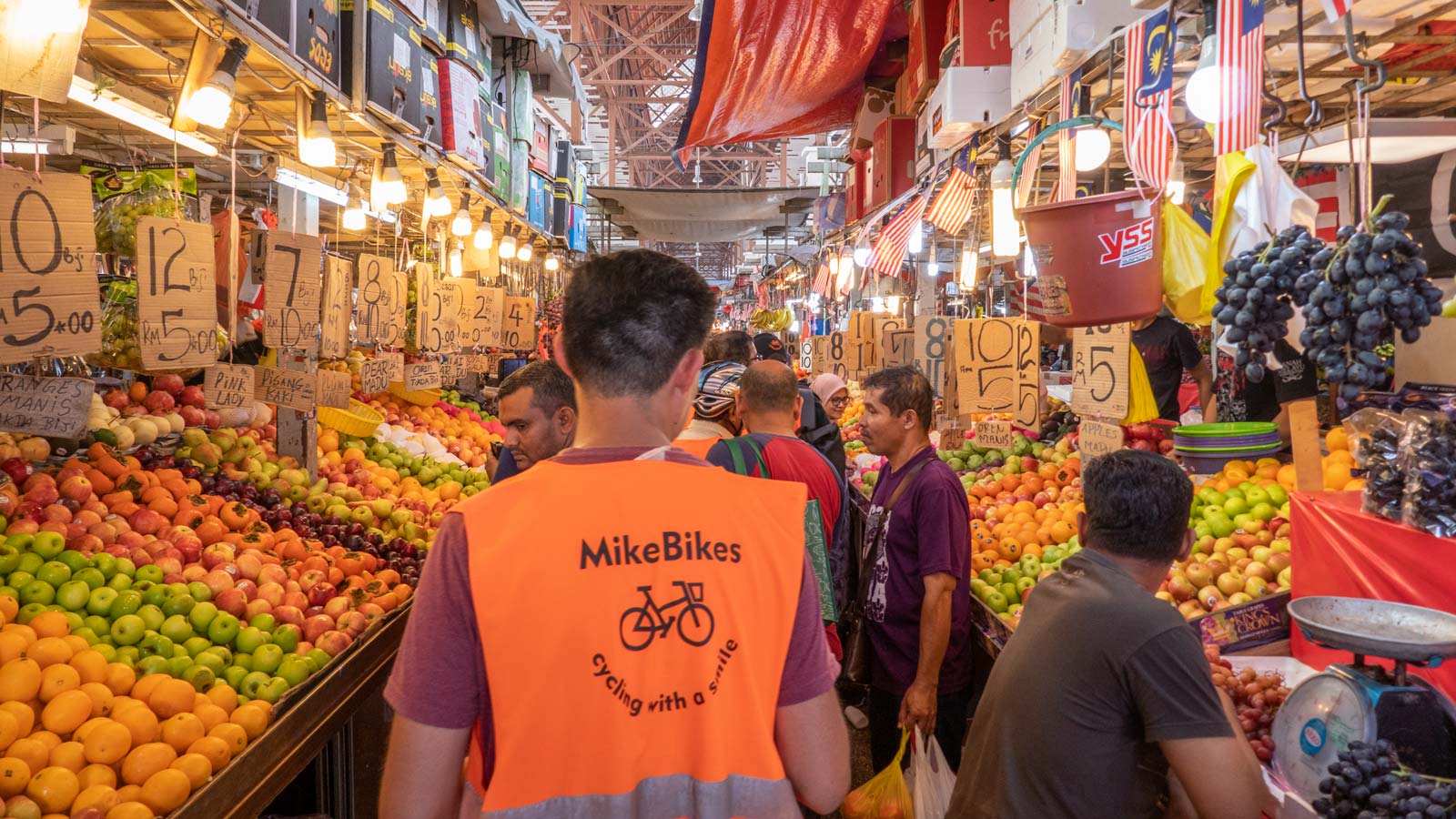
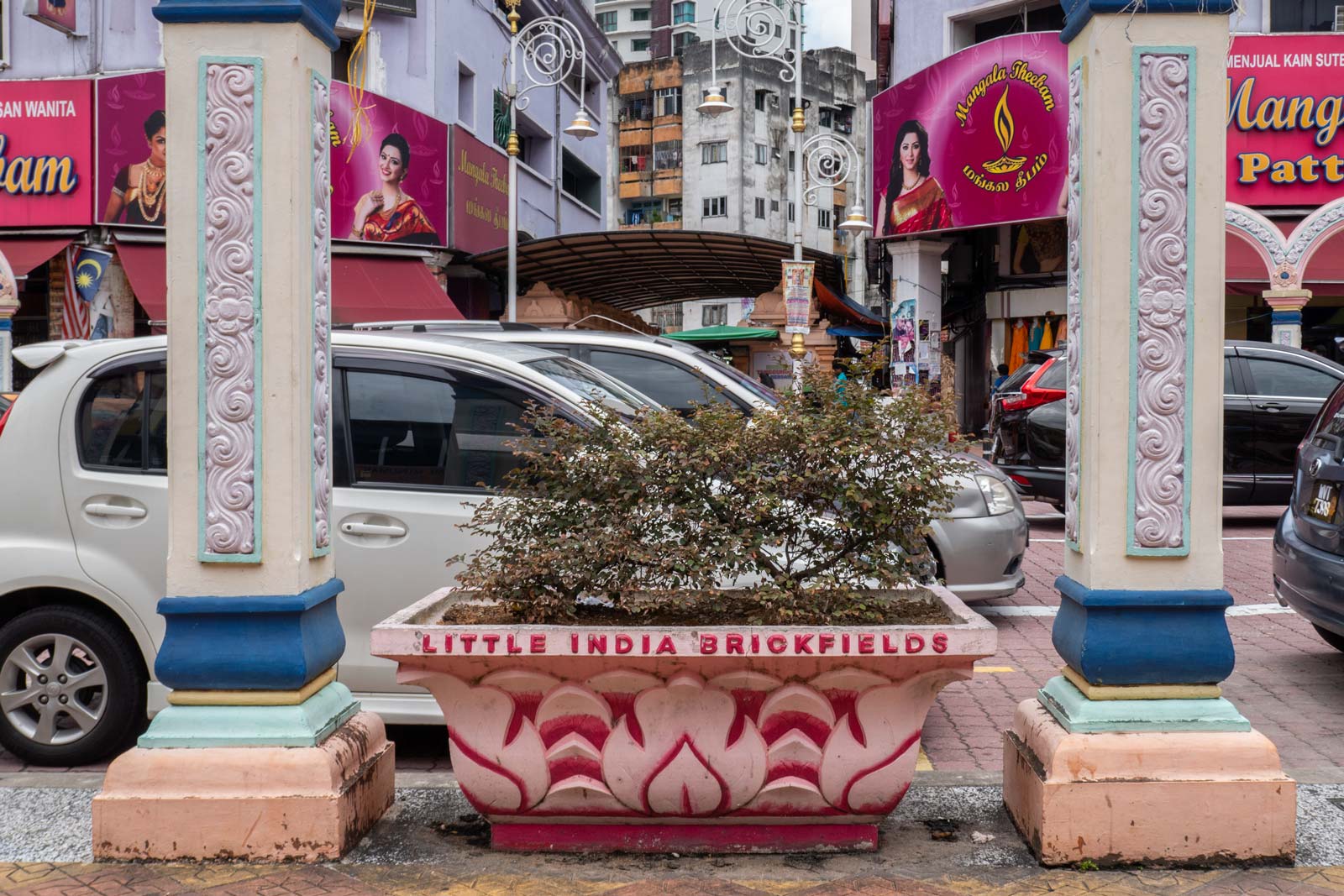
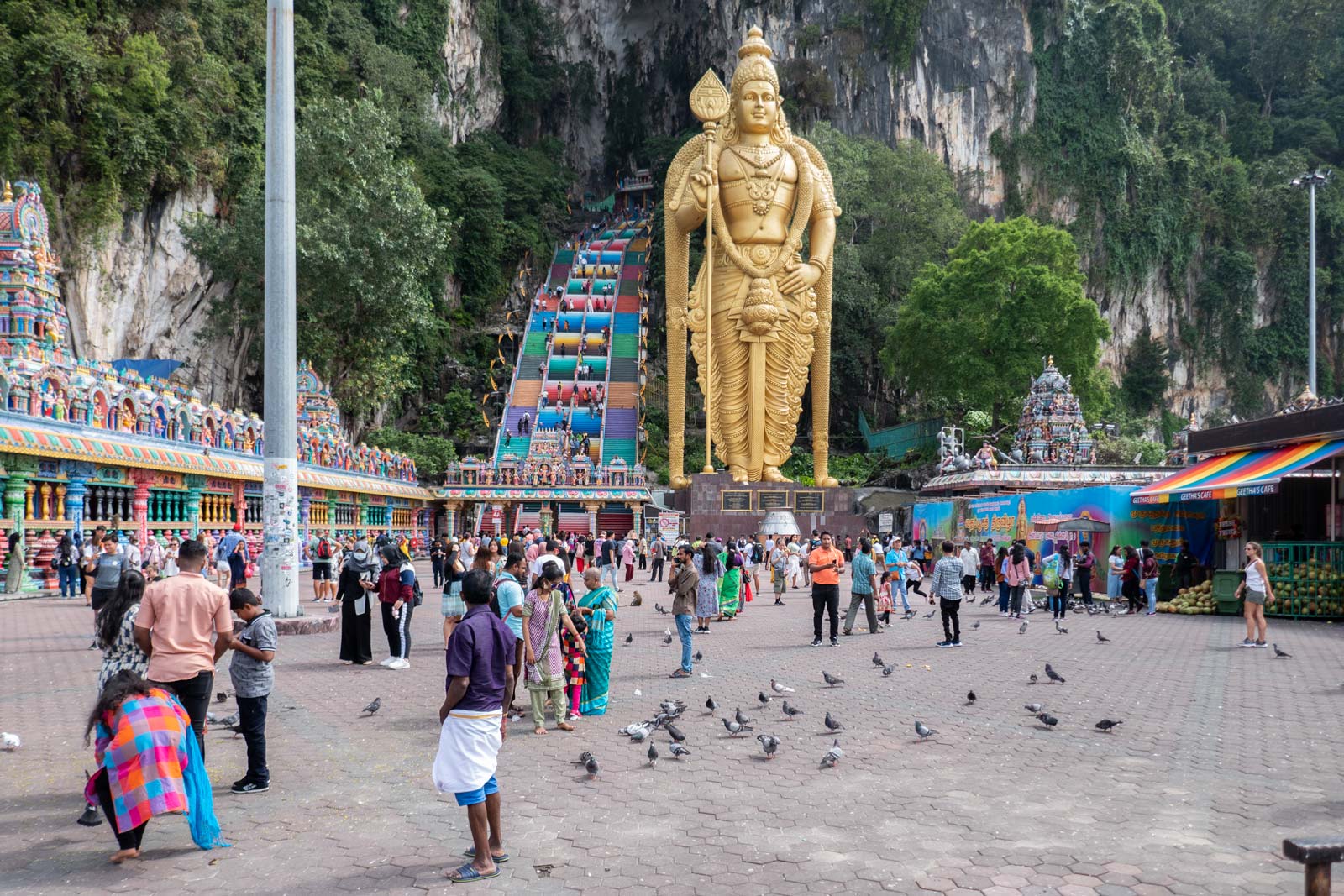
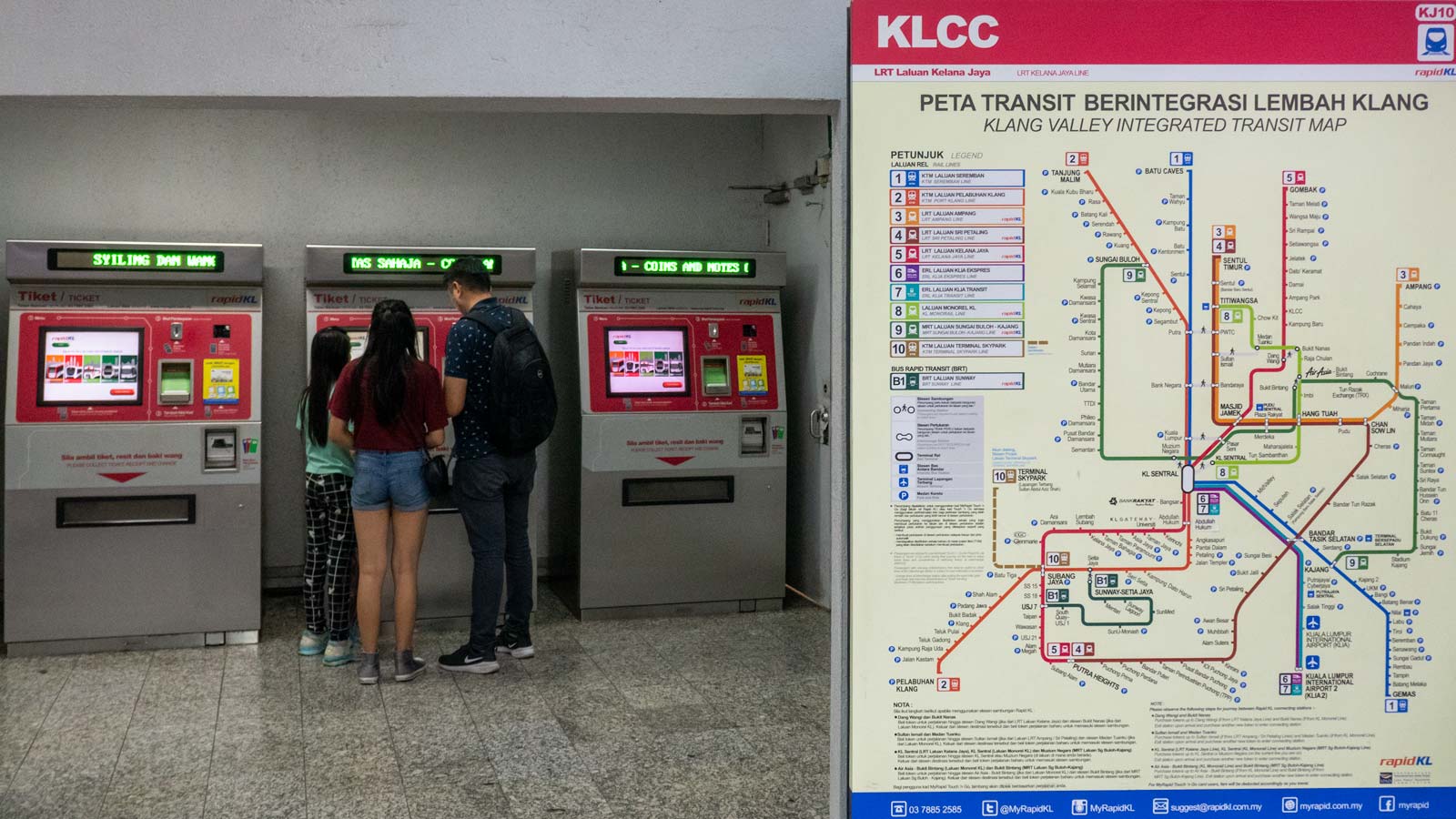

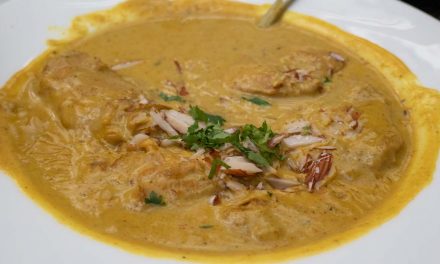
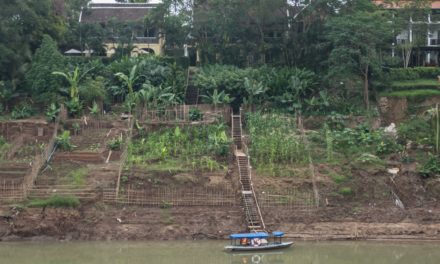
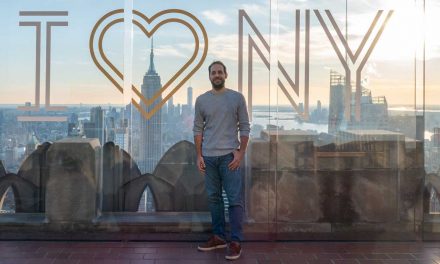
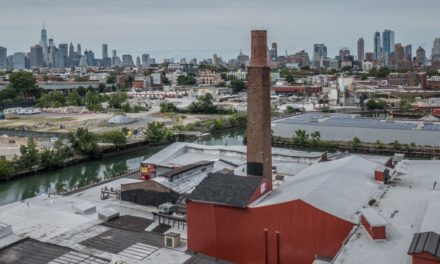

All these places look great. Would love to travel.
Interesting article, thanks for sharing. Also, the photos are great – I loved the colorful stairs at Batu caves.
I have never been to KL but you have made it very enticing to visit. Good to know that they also have a good transport system. I was only able to visit Kota Kinabalu sometime 10 years ago. Your post made me miss kopitiam! I am a coffee lover and funny how I was only able to try it out in Singapore. I can’t remember having coffee at KK anymore.
KL looks such a magical place to visit. Its so bright and colorful
It looks very interesting place to visit. I love the quality of your images and how you made this travel guide.
I miss getting around KL. I love to go back and visit the places I missed when we went there. It’s true. Thanks to KL Metro for giving tourists good experience in getting around those places. 🙂
Me and my friends already booked a trip in KL in 2021. And this is a great of help for us! Thanks!
After reading this KL travel post, I am excited to visit KL soon! Although we might still prefer renting a car for convenience 🙂
If i ever visit this place, bazaar baru chow kit is where you’ll find me. It looks so serene.
Public transport makes our mobility more flexible.
Some of these places would be wonderful to visit. Public transit does make things fun and to have free guides for tours would be great. Awesome article!!!!????
I’d love to visit some of these places one day. They all look fab!
Louise x
I am still hoping that I get to go to these places with my family. I’m sure my kids would love these places.
I have some old school friends from Kuala Lumpur and should visit them some day. It would be a joy to visit the places you shared here.
This is what I was looking for … Perfect as its on my bucket list and I hope to finally go next year after having to cancel my trip 3 times due to work and now lockdown. ahh. Its so informative and so many amazzing places to visit.
Always down for visiting places without having to travel by car! Parking is such a hassle, among other things!
I really want to visit singapore.i’ll make it happen after the pandemic is over.
I would love to experience the metro system in Kuala Lumpur. It’s great to know how to use transit systems m.
This is really great to know! Thanks for sharing!